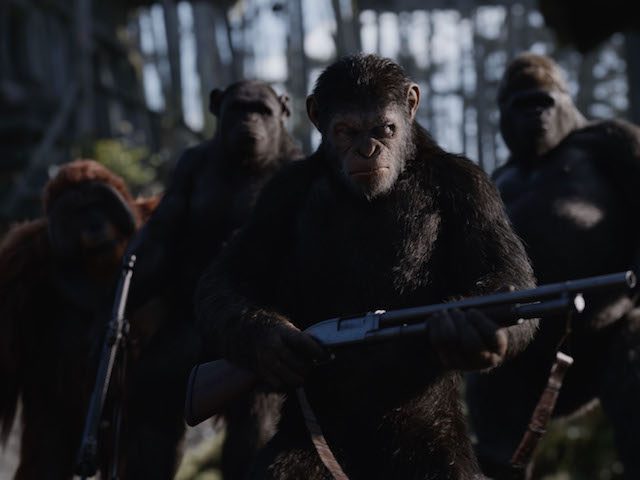“War for the Planet of the Apes” is amazing in quite a few ways. The motion-capture technology that was used to bring the apes to life is so advanced that it’s hard to imagine the creatures were merely fabricated.
The facial expressions of the apes accurately capture the essence of human emotions, and their physical attributes make them look like the real thing.
Apes riding horses, bearing firearms and engaging in combat in an abundant jungle, and convincingly so; surely this is something that only the ‘Apes’ franchise can seamlessly deliver. It truly is a sight to behold, this smorgasbord of simians battling nature, battling humans and battling their own humanity.
The ability to humanize the primates and to create a distinct identity for each important character is probably one of the film’s most scintillating features.
Ring leader Caesar (Andy Serkis) isn’t the only ape to watch out for; there’s Maurice, Caesar’s advisor, and Rocket, his right-hand man; Cornelia, Caesar’s wife, and Lake, the mate of his son; and Bad Ape, a chimp that provides comic relief in measured but thoroughly amusing doses throughout the generally dramatic film.
Dramatic because, as much as the title and trailer promise warfare in copious amounts, it just isn’t the case.
The brutality of humans on the primates happens all throughout but the guilty pleasure of seeing apes waging war against soldiers ends abruptly before the second half of the movie.
While the violence and bloodbath are cringe-worthy enough to make an animal rights advocate cry, there isn’t enough of them to go around. There aren’t enough scenes depicting apes in the killing fields, as almost all of them remain loyal to Caesar’s predisposition to live in isolation and in peace.
Combat is merely a form of self-defense and a means to self-preservation.
Woody Harrelson portrays the hot-headed human Colonel rather effectively; he is repulsive in his ruthless efforts to eliminate all apes and all those infected with the Simian Flu. He makes sure there’s enough brutality to make it preposterously difficult for the primates. He is detestable almost in the film’s entirety, and it might have been more effective if he was a jerk, completely. The weakness of the Colonel is the weak link of Harrelson’s character.
War for the apes in this sense is a fight for survival and against absolute extinction. And with this track, there’s bound to be tons of drama involved; there’s a tragic love story and family tucked in between, except you have primates instead of humans experiencing loss and seeking justice.
Many instances could have been tear-jerking, but they fall short at this simply because it’s unnatural for human viewers to empathize and be carried away by an ape’s emotions.
The greater war here is Caesar’s. He could have joined his kind in migrating to a promised land but instead goes against his primal instincts, seeking to avenge unfortunate circumstances in the most humanly yet inhumane manner. The bigger fight is wrought by Caesar alone, representing his kind. The greater war here is Caesar—an ape— battling his humanity.
Overall, “War for the Planet of the Apes” is entertaining and satisfying for its characterization, storytelling and cutting-edge visuals, but it is more of a drama film than a war film.
“War for the Planet of the Apes” opens in cinemas on July 12.










